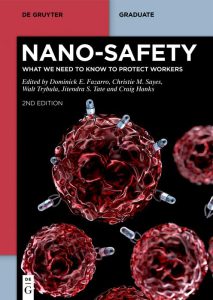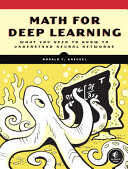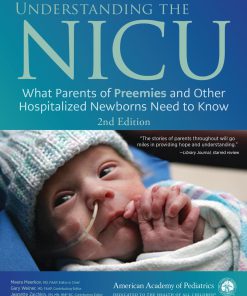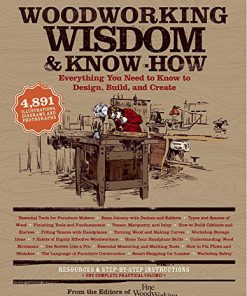Nano Safety What We Need to Know to Protect Workers by Dominick E. Fazarro 9783110781953 3110781956
$50.00 Original price was: $50.00.$25.00Current price is: $25.00.
Nano Safety What We Need to Know to Protect Workers Dominick E. Fazarro – Ebook Instant Download/Delivery ISBN(s):9783110781953 ,3110781956

Product details:
- ISBN 10:3110781956
- ISBN 13:9783110781953
- Author: Dominick E. Fazarro
Nano-Safety
What We Need to Know to Protect Workers
Table contents:
Barbara Foster 1 The World of Nanotechnology
Acknowledgement
Foreword
1.1 Introduction
1.2 What is Nanotechnology?
1.3 The Growing World of Nanomaterials
1.3.1 Carbon-Based Nanomaterials
1.3.2 Colloidal-Based Nanomaterials
1.3.3 Quantum Dots
1.3.4 Biologically Based Nanomaterials
1.4 Instrumentation for Investigating Nanotechnology
1.5 Where is Nanotechnology Today?
1.6 Applications
1.7 The Role of the Government in Promoting Nanotechnology
1.7.1 US Funding
1.7.2 Global Policy
1.7.3 Impact of the UN
1.8 The Nanotechnology Market
1.8.1 Is There Really a “Nanotechnology Market”?
1.8.2 What Is the Size of the Nanotechnology Market?
1.8.3 Nanotechnology Market Sectors
1.9 The Challenge of Nanotechnology Safety
1.10 The Crucial Need for Education and Certification
1.11 The Future
1.11.1 NNI’s Signature Initiatives (as of 2021)
1.11.2 Other Intriguing Future Initiatives
1.11.3 Energy Out of Thin Air
1.11.4 Solar Cells
1.12 Themes for Thought
Eylem Asmatulu 2 The World of Engineering Nanomaterials
2.1 Introduction
2.1.1 How Did Engineering Nanomaterials Evolve?
2.2 Stabilization of Nanomaterial Shape
2.2.1 Surfactants
2.2.2 Nanomaterial Shape and Stabilization
2.3 Classification and Labeling of Nanomaterials
2.3.1 What Are Nanomaterials?
2.3.2 Types of Nanoparticles
2.3.3 Labeling of Nanomaterials
2.4 Toxicity of Nanomaterials
2.4.1 Particle Size
2.4.2 Surface Chemistry
2.4.3 Surface Charges
2.4.4 Surface Area
2.5 Exposure Assessment
2.5.1 Exposure Limit for Nanoparticles
2.5.2 Exposure Monitoring
2.6 Conclusions
W. S. Khan, R. Asmatulu 3 The Importance of Safety for Manufacturing Nanomaterials
Acknowledgement
3.1 Introduction
3.2 Nanotechnology Involvement
3.2.1 Scope of Nanotechnology
3.2.2 Nanotechnology Education and Research Programs
3.3 Nanostructured Materials
3.3.1 Nanoparticles
3.4 Toxicity of Nanomaterials
3.4.1 Toxicity of Carbon-Based Nanomaterials
3.4.2 Toxicity of Metal-Based Nanomaterials
3.5 In Vitro Assessments of Nanomaterial Toxicity
3.5.1 Detection of Surface Contamination
3.5.2 Particle Sizing and Aggregation
3.6 Nano-safety
3.6.1 Potential Safety Issues
3.6.2 Exposure Assessment and Characterization
3.6.3 Precautionary Measures
3.7 Conclusions
Jitendra S. Tate, Roger A. Hernandez 4 Safety Approaches to Handling Engineered Nanomaterials
4.1 Introduction
4.2 Potential Health Concerns
4.3 Proactive Measures to Examine Precautions
4.4 Assessment of Engineered Nanomaterials
4.4.1 Hazard Assessment
4.4.2 Hazardous Communication
4.4.3 Exposure Assessment
4.5 Characterization of Engineered Nanomaterials
4.5.1 Fullerenes
4.5.2 Carbon Nanotubes
4.5.3 Carbon Black
4.5.4 Quantum Dots
4.5.5 Metals and Metal Oxides
4.6 Control Preferences
4.7 Management of Engineered Nanomaterials
4.7.1 Waste Disposal
4.7.2 Management of Spills
4.8 Overview of National and International Associations that Adopted the Handling and Use of Nanomaterials
4.8.1 British Standards Institution (BSI)
4.8.2 Health and Safety Executive (HSE)
4.8.3 International Organization for Standardization (ISO)
4.8.4 Organization for Economic Cooperation and Development (OECD)
4.8.5 U.S. National Institute for Occupational Safety and Health
4.8.6 Safe Work Australia (SWA)
Christie M. Sayes, James Y. Liu, Matthew Gibb 5 Certification: Validating Workers’ Competence in Nano-safety
5.1 Introduction
5.2 Definition of Nanotechnology for Training and Certification
5.3 Occupational and Environmental Health and Safety Management
5.4 Anticipating Hazards in Nanotechnology
5.5 Recognizing Hazards in Nanotechnology
5.6 Evaluating Hazards in Nanotechnology
5.7 Controlling Hazards in Nanotechnology
5.8 Confirming Hazards in Nanotechnology
5.9 Conclusions
5.10 Time to Reflect Questions
Walt Trybula, Deb Newberry 6 Understanding the Implications of Material Unknowns
6.1 Introduction
6.2 Background on Nanotechnology Safety Programs
6.3 What Are Nanomaterial Unknowns?
6.4 Impact to the Public
6.5 Risk Avoidance
6.6 Ethics
6.7 Government Pressure to Create Facts
6.8 There Is No Place for Politics or Opinions
6.9 Summary
Evelyn H. Hirt, Walt Trybula 7 What is Considered Reliable Information?
7.1 Introduction
7.2 Background on the Use of “nano”
7.3 Information ‘Fact and Fiction’ the Dangers
7.3.1 Questionable Correlations in Chinese Workers’ Deaths
7.3.2 Questionable Identification of “Nano” Specific Dangers
7.3.3 Questionable Correlation of Carbon Nanotubes to Asbestos
7.3.4 Issues with NanoSilver Particles
7.3.5 Over Generalization of Human Contact with Nanomaterials
7.3.6 Impacts of Litigation on Fact Finding and Misleading Correlations
7.3.7 Sources with Conflicting Information
7.3.8 Separating ‘Fact and Fiction’
7.3.9 Source of Generated Information
7.4 Validity and Availability of Information Sources
7.4.1 Professional Societies Resources & Publications
7.4.2 Government Sponsored Publications & Recourses
7.4.3 Other Information Resources
7.5 Summary Observations
J. Craig Hanks, Emily Kay Hanks 8 Ethics and Communication: The Essence of Human Behavior
8.1 Introduction
8.2 The Challenge of Ethics for Emerging Technologies
8.3 What Does It Take to Be a Good Professional?
8.4 Technical and Procedural Knowledge and Skill Are Necessary, but not Enough
8.5 Guidance from Rules Is Necessary, but Compliance Is not Enough
8.6 Considering Ethical Frameworks
8.6.1 Deontology and Kant: Autonomy and Respect for Persons
8.6.2 The Pursuit of Happiness: Utilitarian Ethics
8.6.3 Virtue: Character and Practice
8.7 Communication and Ethics
8.8 Final Remarks
8.9 Questions
Christie M. Sayes, James Y. Liu, Matthew Gibb 9 Behavior-Based Worker Safety for Engineered Nanomaterials
9.1 Introduction
9.2 Traditional Behavior-Based Worker Safety
9.3 The ABC Model as Applied to Nanotechnology in the Workplace
9.4 Exposure Scenarios Along the Nanomaterial Value Chain
9.4.1 Stage 1: Production and Manufacturing
9.4.2 Stage 2: Distribution and Transportation
9.4.3 Stage 3: Formulators and Users
9.4.4 Stage 4: Disposal, Recycle, and Reuse
9.5 The Role of the Employer
9.6 Time to Reflect Questions
Dominick Fazarro 10 The Future of Nanotechnology Safety
People also search:
nano safety what we need to know
nanotechnology safety concerns
is nano safe
nanotechnology safety
nano safety solutions
You may also like…
Education Studies & Teaching - School Education & Teaching
Computers - Computer Science
Education Studies & Teaching - Education Management & Organisation
Biology and other natural sciences
Dinosaurs: How We Know What We Know 1st Edition Mary Higby Schweitzer
Medicine - Pediatrics
Housekeeping & Leisure - Woodworking & Carving
Woodworking Wisdom Know How Everything You Need to Know to Design Build and Create Taunton Press
Business & Economics - Human Resources
Relationships & Lifestyle - Pregnancy & Childcare












